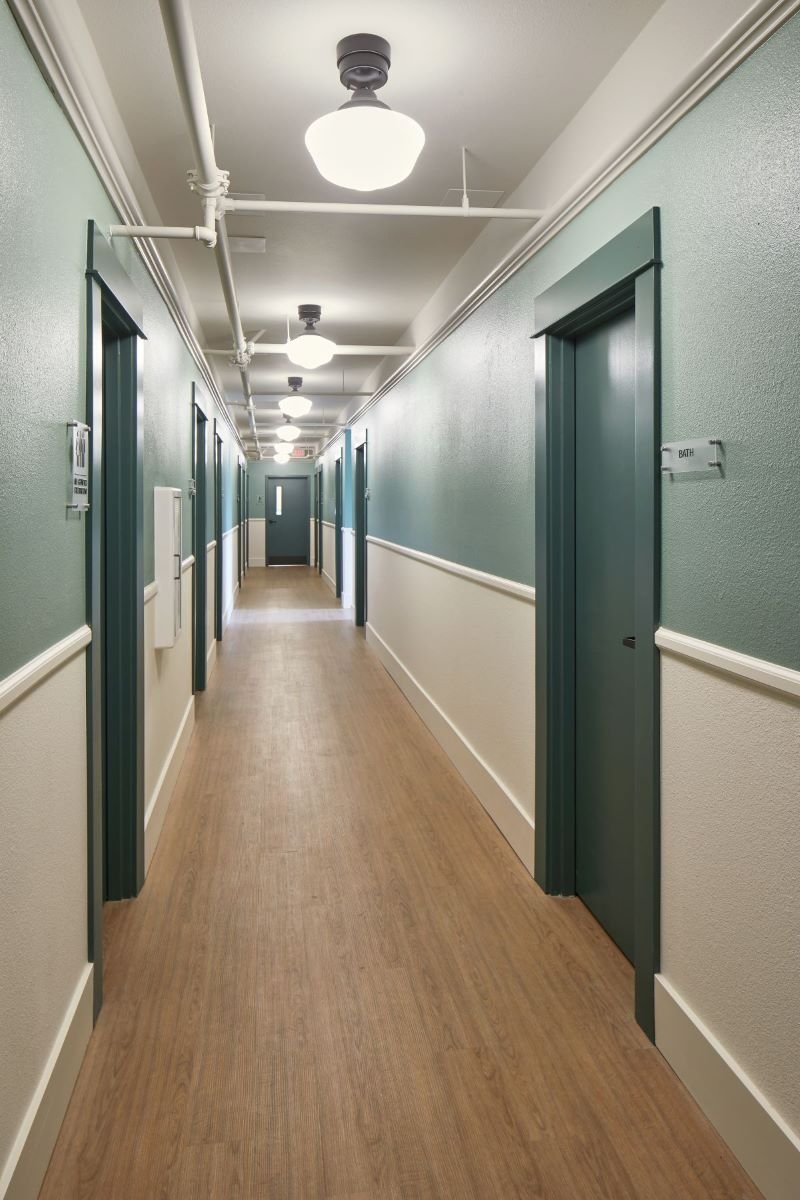
The Rose Apartments
Constructed in 1910 and historically called the Pallay Apartments, The Rose earned its current name in 1988 when the building was converted to single-room occupancy housing for women. Thirty years later, the three-story building was in need of a major renovation and a seismic upgrade to the unreinforced masonry structure.
The developer, REACH CDC, contacted Jessica to determine if the building was eligible for the National Register to take advantage of the historic tax credits to make the project financially feasible. While the structure was certainly old, it did not tick all the boxes that make a building easily eligible for the Register. Notably, the building lost much of its interior character in the 1988 conversion including all wood windows being replaced with vinyl ones. However, being known for her ability to find significance, Jessica dug into the archives and uncovered documents demonstrating the building was one of the first large masonry apartment buildings constructed in Portland’s Eastside.
In writing the National Register nomination, Jessica subsequently argued that the building—while not necessarily architecturally significant—was significant when placed in its appropriate historical context. She demonstrated that the building exemplified both a cultural shift in housing in the early 20th century and how that shift represented a changing pattern of development and growth as East Portland boomed following the Lewis and Clark Exposition.
One additional strategy to help the nomination process was that the listing was made after the project was complete. Restoring historic elements of the building, including the main stair, interior historic trim, and built-ins, bolstered the nomination’s arguments that the building was important and made the tax credit process relatively smooth-sailing. However, Jessica had to assist REACH with memos and conference calls to gain the approval of their investor who was originally wary that the project only had an approved Part 1 and was not a formally listed building at ground-breaking.
Lastly, this project utilized federal funds and the rehabilitation scope was reviewed through the Section 106 process. Jessica prepared the 106 compliance documentation and shepherded it through the Oregon SHPO’s review process.
This outstanding project was recognized with a DeMuro Award in 2021.
SCOPE OF WORK PROVIDED
National Register nomination
Federal historic tax credits
Section 106






